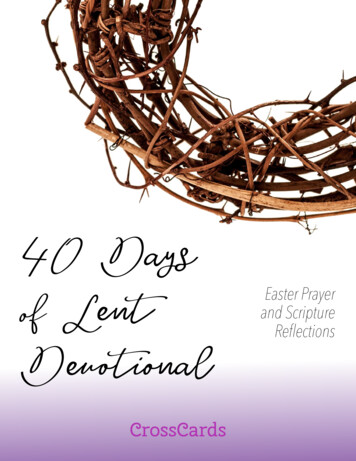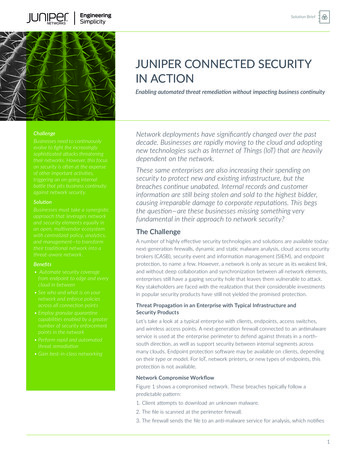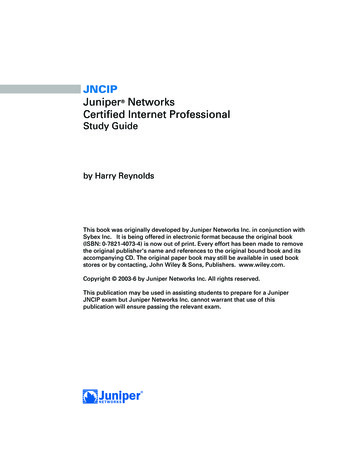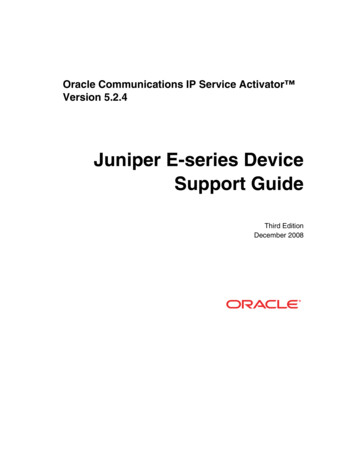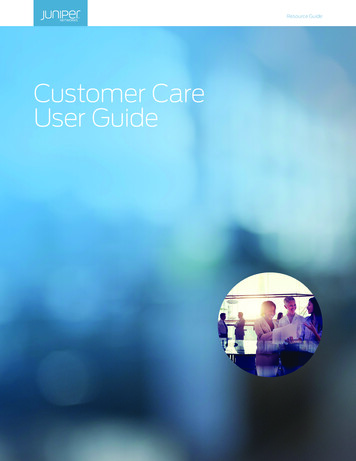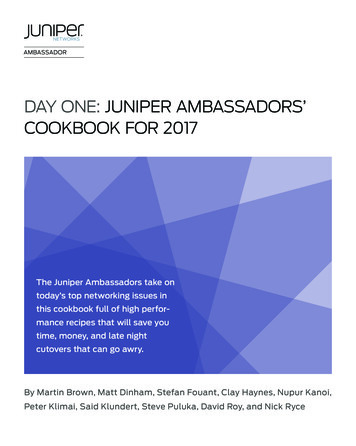
Transcription
Day One: Juniper Ambassadors’cookbook for 2017The Juniper Ambassadors take ontoday’s top networking issues inthis cookbook full of high performance recipes that will save youtime, money, and late nightcutovers that can go awry.By Martin Brown, Matt Dinham, Stefan Fouant, Clay Haynes, Nupur Kanoi,Peter Klimai, Said Klundert, Steve Puluka, David Roy, and Nick Ryce
DAY ONE: JUNIPER AMBASSADORS’COOKBOOK FOR 2017The Juniper Ambassador program recognizes and supports its top community membersand the generous contributions they make through sharing their knowledge, passion, andexpertise on J-Net, Facebook, Twitter, and other social networks. In their new Day Onecookbook, the Juniper Ambassadors take on some of the top support issues and provideclear-cut solutions and frank discussions on how to keep things running. The recipes inthis cookbook are meant to provide quick and tested solutions to everyday networkingadministration issues.“Day One: Juniper Ambassadors Cookbook 2017 covers several complex networking problems and solutions, working with technologies such as EVPN, VXLAN, OSPF sham links,centralized route reflectors, scripted automation with Python, segment routing, and BGPflowspec. Using Junos OS configuration stanzas and command line output analysis, eachrecipe is demonstrated in detail. The format is perfect for network engineers, explainingeach problem and then diving deeply into the solutions.”Ethan Banks, Co-Founder of Packet Pushers Interactive, http://packetpushers.netIT’S DAY ONE AND YOU HAVE A JOB TO DO, SO LEARN HOW TO:n Configure basic QoS on Junos-enabled devices.n Migrate from a Cisco LNS to vLNS on a Juniper vMX Series.n Configure BGP to advertise multiple paths to destinations.n Utilize VXLAN technologies with EVPN signaling.n Use OSPF as a PE-CE routing protocol in MPLS VPNs.n Script network regression testing with Junos PyEZ.n Selectively leak resources (or subnets) between different VPNs.n Integrate MX Series routers into Arbor Networks SP.n Migrate your core to centralized route reflecting and segment routing.Juniper Networks Books are singularly focused on network productivity and efficiency. Peruse thecomplete library at www.juniper.net/books.Published by Juniper Networks Books
Day One: Juniper Ambassadors’Cookbook for 2017By Martin Brown, Matt Dinham, Stefan Fouant, Clay Haynes, Nupur Kanoi,Peter Klimai, Said Klundert, Steve Puluka, David Roy, and Nick RyceRecipe 1: Basic QoS in the Junos OS . . . . . . . . . . . . . . . . . . . . . . . . . . . . . . . . . . . . . . . . . . 9Recipe 2: Migration from a Cisco LNS to vLNS Using theSubscriber Management Features on vMX. . . . . . . . . . . . . . . . . . . . . . . . . . . . . . . . . . . . 23Recipe 3: Achieving Multi-Path in Route ReflectionUsing BGP Add Path. . . . . . . . . . . . . . . . . . . . . . . . . . . . . . . . . . . . . . . . . . . . . . . . . . . . . . . . . . 41Recipe 4: EVPN and Virtual Machine Mobility . . . . . . . . . . . . . . . . . . . . . . . . . . . . . . . . . 57Recipe 5: OSPF as a PE-CE Routing Protocol in MPLS VPNs . . . . . . . . . . . . . . . . . . 65Recipe 6: Network Regression Testing with Junos PyEZ. . . . . . . . . . . . . . . . . . . . . . . 79Recipe 7: Selective Resource Sharing Across VPNs . . . . . . . . . . . . . . . . . . . . . . . . . . . 95Recipe 8: Integrate MX Series Routers into Arbor Networks . . . . . . . . . . . . . . . . . . 103Recipe 9: BGP Flow Spec Between Arbor Networks and MX Series. . . . . . . . . . . 109Recipe 10: Integrate MX Series With Arbor Networks TMS Off Ramp. . . . . . . . . . . 117Recipe 11: Migrate Your Core to Centralized Route Reflectionand Segment Routing . . . . . . . . . . . . . . . . . . . . . . . . . . . . . . . . . . . . . . . . . . . . . . . . . . . . . . . 123
iv 2017 by Juniper Networks, Inc. All rights reserved.Juniper Networks and Junos are registered trademarks ofJuniper Networks, Inc. in the United States and othercountries. The Juniper Networks Logo and the Junoslogo, are trademarks of Juniper Networks, Inc. All othertrademarks, service marks, registered trademarks, orregistered service marks are the property of theirrespective owners. Juniper Networks assumes noresponsibility for any inaccuracies in this document.Juniper Networks reserves the right to change, modify,transfer, or otherwise revise this publication withoutnotice.Published by Juniper Networks BooksTechnical Reviewer: Nick RyceEditor in Chief: Patrick AmesCopyeditor and Proofer: Nancy KoerbelAmbassador Program Manager: Julie WiderIllustrator: Karen JoiceISBN: 978-1-941441-47-3 (print)Printed in the USA by Vervante Corporation.ISBN: 978-1-941441-48-0 (ebook)Version History: v1, March 20172 3 4 5 6 7 8 9 10This book is available in a variety of formats at: http://www.juniper.net/dayone. Send your suggestions,comments, and critiques by email to dayone@juniper.net.
vAbout the Juniper AmbassadorsThe Juniper Ambassadors are global technical/brand advocates thatactively participate across Juniper community and social programs.They are a diverse set of network engineers, consultants, and architectswho work in the field with Juniper technologies on a daily basis. TheJuniper Ambassadors’ mission is spreading the word about the power ofJuniper Networks to the world’s networking and security engineers.Welcome back, Ambassadors.About the AuthorsMartin Brown (Recipe 1) is a Network Security Engineer for a tier 1service provider based in the UK and is a Juniper Ambassador. Martinstarted his career in IT over 20 years ago supporting Macintosh computers and in 1999 earned his first certification by becoming an MCP thenan MCSE. In the past six years he has progressed to networking,implementing, and supporting network devices in a number of differentenvironments including airports, retail, warehouses and service provider. His knowledge covers a broad range of network device types andnetwork equipment from most of the major vendors including Cisco, F5,Checkpoint, and of course, Juniper.Matt Dinham (Recipe 2) is an independent consulting Network Engineer/Architect based in the UK, and is a Juniper Ambassador. Matt hasover 15 years experience working within Enterprise and Service Providerenvironments (both public & private sector). He holds several JuniperCertifications and is certified CCIE#16387 (R&S, SP). Matt can bereached on Twitter - @mattdinham.Stefan Fouant (Recipe 3) is a Sales Engineer with Copper River Information Technology with over 18 years of experience in the Service Providerand network security industries. He holds several patents in the area ofDDoS detection and mitigation and is also a co-author of drafts withinthe IETF DOTS working group relating to standardized signaling ofcoordinated DDoS attack filtering and mitigation mechanisms. He wasthe first person globally to achieve all three expert-level Juniper certifications, and was a technical editor of the book Juniper MX Series byO’Reilly (2012).Clay Haynes (Recipe 4) is an IT professional with over 10 years ofexperience working on servers, firewalls, and networking. He currentlyworks at Twitter as a Senior Network Security Engineer and is a JuniperAmbassador. Clay currently holds the JNCIE-SEC #69 and JNCIE-ENT#492 certifications.
viDay One: Juniper Ambassadors’ Cookbook for 2017Nupur Kanoi (Recipe 5) Nupur Kanoi is a senior network engineer for aglobal service provider where she has gained experience in serviceprovider backbone architecture and design. She also holds JNCIE-ENT(#520), JNCIP-SP, and JNCDS-DC certifications. Nupur can be reachedon LinkedIn (linkedin.com/in/nupur-kanoi-520) and on Twitter (@nupur kanoi). She is currently working towards her JNCIP-DC.Peter Klimai (Recipe 6) is a Juniper Ambassador and a Juniper Networks certified instructor working at Poplar Systems, a Juniper-Authorized Education Partner in Russia. He is certified JNCIE-SEC #98,JNCIE-ENT #393, and JNCIE-SP #2253 and has several years of experience supporting Juniper equipment for many small and large companies.He teaches a variety of Juniper classes on a regular basis, beginning withintroductory level (such as IJOS) and including advanced (such asAJSEC, JAUT and NACC). Peter is enthusiastic about network automation using various tools, as well as network function virtualization.Said van de Klundert (Recipe 7) is a Dutch networking enthusiast,Juniper Networks Ambassador, network engineer at Interconnect, andcontent developer at iNET ZERO. Said has spent most of his career onthe service-provider side of things and is known to lab-up and writeabout whatever sparked his interest. He is a father to his son, husband tohis wife, and he enjoys long dinners with friends. JNCIE-SP #2573.Steve Puluka (Recipes 8, 9, & 10) is a Senior Network Engineer withDQE Communications in Pittsburgh, PA. He is part of a service providerteam that manages a fiber optic Metro Ethernet, Wavelength, andInternet Services network spanning 3k route miles throughout westernPA. He holds a BSEET along with a dozen Juniper Certifications inService Provider, Security, and Design. He also has certification andextensive experience in Microsoft Windows server, along with strongVMware skills starting with Version 2. He has enjoyed supportingnetworks for more than 20 years.David Roy (Recipe 11) is a Senior Support Engineer for Orange. He isinvolved in many projects based on IP and MPLS technologies. He lovestroubleshooting complex routing and switching issues. He is the authorof the The MX Series, 2nd Edition (2016, O'Reilly) and Juniper Books’This Week: An Expert Packet Walkthrough on the MX Series 3D. Davidis triple JNCIE.Nick Ryce (Technical Editor) is a Senior Network Architect for a majorISP based in Scotland, and a Juniper Ambassador. Nick has over adecade of experience working within the Service Provider industry andhas worked with a variety of vendors including Cisco, Nortel, HP, andJuniper. Nick is currently certified as JNCIE-ENT #232.
PrefaceAfter Reading This Book, You’ll Be Able To: Configure basic QoS on Junos-enabled devices. Migrate from a Cisco LNS to vLNS on a Juniper vMX Series. Configure BGP to advertise multiple paths to destinations. Utilize VXLAN technologies with EVPN signaling. Use OSPF as a PE-CE routing protocol in MPLS VPNs. Script network regression testing with Junos PyEZ. Selectively leak resources (or subnets) between different VPNs. Integrate MX Series routers into Arbor Networks SP. Migrate your core to centralized route reflecting and segmentrouting.PrefaceSomeone asked me the other day: What’s It Like Being a JuniperAmbassador? Most people think of the program as some super secretsquirrel group made up of sycophantic Juniper lovers who are blind toany other vendors. This is simply not the case. The Ambassadorprogram is made up of lots of individuals who have a great love of allthings geek and a deep knowledge of Juniper tech as well as othervendors. Juniper allows us access to product managers and developersto help us get a better understanding of their products, not only to helpothers in the community, but also to help us make informed decisionsabout the products we use and recommend.All of the Juniper Ambassadors are either active on multiple socialmedia outlets or participating/lurking on the J-Net forums to helpusers with any issues they may have. We are always bouncing ideas offof each other, not only on social media but at the yearly gathering weattend. It’s been fun, and how many corporate programs can you claimas fun?Of course one of the reasons for the networking frolic is our championand program manager, Julie Wider at Juniper Networks. She supportsus when we need it and ignores us when the workplace humor kicks in.Thank you Julie, from all of us.vii
viiiDay One: Juniper Ambassadors’ Cookbook for 2017Which brings me to the following Ambassadorian fine print: Not all ofthe Ambassadors contributed to this book. There are almost two dozenAmbassadors in all, and some of us have busy day jobs. What youdon’t see is all of the support and comradery (and cheering) that goeson for those who temporarily have some free time and are willing tospend that time helping other network engineers. So although you seesome great names as authors of this cookbook, there are even morenetwork engineers supporting them, reviewing their writing, andtesting recipes. Thank you to all Juniper Ambassadors.You have to be nominated to be a Juniper Ambassador, and duringyour tenure you are expected to contribute to books, blogs, tweets, andposts. Ambassadors give feedback to Juniper management and toproduct line managers, and it’s real feedback, because they can, andbecause they work with the product all day long. If you tend tonetworks, you know how chaotic the job is getting – well part of beingan Ambassador is to relay that message to Juniper and to Juniper’scustomers. That’s why this is the third Ambassador Day One book.Nobody knows it better than a Juniper Ambassador: It’s Day One andYou’ve Got A Job To Do.Enjoy this year’s Ambassador Cookbook. It’s a good one.Nick Ryce, March 2017Technical Reviewer and Cat Herder Extraordinaire,Day One: Juniper Ambassadors’ Cookbook 2017
Recipe 1:Basic QoS in the Junos OSThe enterprise networks of today tend to be large networks carryingmany different types of traffic such as email, customer data, web pages,videos, and voice data for telephone calls. This means there is all kindsof data vying for as much bandwidth as possible, not to mention thatdifferent types of traffic have different characteristics.As an example, streaming video can be a continuous stream of highbandwidth data or it can be ‘bursty’ – sending a lot of data, thenstopping for a bit, then sending another lot of high volume data.Alternatively, data traffic such as the type containing plain text emailscan be relatively small in size and it doesn’t really matter whether ittakes 500ms or 10 seconds to reach its destination just as long as it getsthere; that’s all that matters.Voice over IP, or VoIP, are telephone calls made via the network andtheir data stream is relatively small, being around 64Kbps, but thestream is constant, without interruption. Just as important, however, isthat the delay between the sending phone sending a packet of data andthe recipient phone receiving the packet of data needs to be the samethroughout the entire conversation. This is called delay variation, morecommonly known as jitter.
10Day One: Juniper Ambassadors’ Cookbook for 2017ProblemThe problem is, how do you ensure that all the high bandwidth orbursty data doesn’t consume your network and prevent other data,like emails, from reaching the email server, while simultaneouslymaking sure that voice data is treated as a priority with very little delayvariation? How do you provide some level of control to the data thatis traversing your network?Unsurprisingly, the title of this recipe is a bit of a spoiler –QoS allowsus to control how much bandwidth a stream of data is using, determine whether that traffic is becoming more than the network canhandle, and also decide how it treats traffic that grows above thebandwidth limit.At first glance this can seem like a bit of an oxymoron; you are dealingwith excessive bandwidth by limiting the bandwidth available tocertain traffic streams, and dropping traffic once the limit is reached,however, QoS also allows you to tell your network devices that sometraffic is more important than other traffic, and as such should betreated as a priority.When you put these two main features together you get somethinginteresting. Imagine for a moment that a network link is 10Mb andthat the streaming video is 4k high bandwidth and wants to take up100% of the bandwidth, but in bursts. You can tell your JunosOS-based devices that the video stream is only allowed to take up 50%of the bandwidth and that any data above the limit that has been setwould be dropped. In addition, when there is voice traffic waiting tobe sent onto the wire, the voice traffic must be sent ahead of the videotraffic.This leads to another question: How does the Junos OS allow a certaintype of traffic to ‘overtake’ another type of traffic? Junos OS-baseddevices don’t have multi-lane freeways going through them to thecables, so how do they hold some types of traffic while sending others?The solution is quite brilliant.When traffic is about to be sent down the wire, the traffic is first placedinto a buffer, which temporarily stores the traffic until the wire is freeto send the data. For the purposes of QoS, the buffer is divided into upto eight segments. These eight segments are known as queues; Junoscan monitor these queues and if it sees traffic in one of the queues witha higher priority it will send this traffic first, then send traffic fromqueues with a lower priority.In addition, Junos doesn’t just keep sending traffic from a high priorityqueue and forget about the lower priority queues. The Junos OS willsend several packets from a high priority queue, then send one or more
Recipe 1: Basic QoS in the Junos OSfrom the lower priority queues, so that other types of traffic don’t feelleft out or so that other traffic isn’t starved of bandwidth while a phonecall takes place.When it comes to controlling how much bandwidth a type of traffic isallowed to use, there are two options: policing or shaping. Policing isharsh in that traffic over the limit set is dropped. Shaping, on the otherhand, treats data slightly differently from policing in that when data ofa bursty nature is being sent there is a period when a lot of data is beingsent and then a period when no data is sent. In this instance, instead ofdropping excess data, shaping holds onto the data and sends it betweendata bursts. Figure 1.1 shows an example of policing that drops dataexceeding 50%. The data in this graph is dark in color, and, as you canclearly see, any data in the shaded area will be dropped.Figure 1.1 Policing Data at 50%Figure 1.2 shows a different story. In this case, there is no data abovethe red line, which means no data has been dropped. Instead, what hashappened is that Junos OS has held onto the data and sent it betweengaps in the bursts of data. This is indicated by shaded gaps between thedata bursts that were previously white.Figure 1.2 Shaping Data at 50%11
12Day One: Juniper Ambassadors’ Cookbook for 2017NOTEWhile this recipe is meant to be as informative as possible, QoS is a topicworthy its own book, therefore this chapter will cover only the verybasics of QoS and readers wishing to study it in more depth may find theDay One book Day One: Deploying Basic QoS by Guy Davies, a usefuladdition to their digital library: one/fundamentals-series/deploying-basic-qos/ .Having given the basics of how QoS works, let’s look at a real-worldscenario and how to implement QoS on an enterprise network. In thisinstance, ACME Company is looking to add VoIP telephones to theirnetwork and will need QoS implementing in order to provide the bestpossible service.The first thing you need to bear in mind is that while ACME has a largeenterprise network, attempting to describe and configure the entirenetwork in this chapter would probably end up doubling the size of thisbook. So instead of describing the entire network, let’s focus on a smallarea. Figure 1.3 illustrates the topology of the ACME network.Figure 1.3 ACME’s Enterprise NetworkIn the scenario you will configure a switch in the access layer, SW-17, toallow for implementing a new VoIP service. SW-17 is a Juniper EX Seriesswitch configured as a virtual chassis with two members. This switch isconnected to the aggregation layer via ports ge-0/1/0.0 and ge-1/1/0.0The first thing you need to do is configure the switch ports so you can giveyour new VoIP phones connectivity. Originally, this was a fairly straightforward task, as the port would be configured as an access port and wasmade a member of whatever VLAN was used to carry voice data, so youended up with a topology similar to what we see in Figure 1.4.
Recipe 1: Basic QoS in the Junos OSFigure 1.4 Adding VoIP Telephones to a LANThere was, however, one small issue with this design. Imagine a place likea call center or a contact center where every agent has their own phoneand workstation. If the call center was using one of the older style PABX(Private Automatic Branch Exchange) systems, each phone was pluggedinto a socket, which in turn had a cable run to an internal exchange. Thiscable could have been standard telephone cable; however, I recall installing a new CAT5 network back in 1993, and rather than running separatetelephone cables, I connected the PABX internal exchange to the telephones via the same CAT5 cable.But what if the call center’s PABX telephones were replaced with VoIPtelephones? The number of switch ports required would effectivelydouble and a call center with 100 agents would need 100 ports for theworkstations and a further 100 ports for the new VoIP telephones. Thismeans you need to purchase another pair of 48 port switches.Thankfully, manufacturers of VoIP telephones came up with a brilliantsolution – add a port to the back of the telephone so you can connect theworkstation. So, in a call center with 100 agents, only 100 ports arerequired, as the phones and workstations are effectively sharing ports andyou end up with a design similar that shown in Figure 1.5.13
14Day One: Juniper Ambassadors’ Cookbook for 2017Figure 1.5 Adding Connecting Clients Through VoIP TelephonesNow the ports are receiving data from two different VLANs: the dataVLAN for the workstation, and the voice VLAN for the telephone.Therefore, the switch needs some way of differentiating between thetwo different data streams. The solution to this is to have the phonesend frames that are tagged with the voice VLAN, while the workstation continues to send untagged frames.The phone, of course, needs to be told which VLAN the frame needs tobe tagged with, and there are two methods to achieve this: eitherconfigure the phone to send frames tagged as the voice VLAN, or use atechnology called “LLDP-MED” where the phone communicates withthe switch using the Link Layer Discovery Protocol (LLPD) and theswitch tells the phone which VLAN is used for the Voice VLAN.When the switch receives a frame, it checks for the VLAN tag. If thetag is present the switch sends the frame to voice VLAN, and if there isno tag the switch forwards the frame to the data VLAN. This solution,however, means that the switch needs to be configured to deal withtagged frames. Let’s do that, otherwise the switch will discard them.
Recipe 1: Basic QoS in the Junos OSSolutionLet’s start by making sure that the relevant VLANs have been createdon the switch. If these have not been created, running the followingcommands creates the VLANs FINANCE and VOICE:set vlans FINANCE vlan-id 100set vlans VOICE vlan-id 300Once the VLANs have been created, the next step is adding the switchport to the correct VLAN. In this case, interface ge-0/0/10.0 is made amember of the VLAN FINANCE:set interfaces ge-0/0/10.0 family ethernet-switching vlan members FINANCEAnother option is setting the port as a trunk link and setting the nativeVLAN as the data VLAN, so when the client sends an untagged framethe switch knows that this frame is for the data VLAN. Let’s use a portset as an access port; now all you need to do is tell the EX Series that ifany frames tagged as belonging to the VOICE VLAN are received onport ge-0/0/10.0 they are carrying VoIP traffic:set ethernet-switching-options voip interface ge-0/0/10.0 vlan VOICEOnce the interface and ethernet-switching-options configuration hasbeen committed to the EX’s running configuration it is ready for a VoIPphone to be connected, except now the traffic from the phones istreated as ordinary traffic.As a result, you need to tell the switch to treat the VoIP traffic differently from data traffic and that is done using something called Class ofService or CoS. CoS differs from QoS in that CoS operates on EXSeries switches and combines the Layer 2 or VLAN level with Layer 3.While QoS operates exclusively at Layer 3, it can identify trafficmarked as a priority by CoS and treat it as such.First you need to help the switch identify how important a trafficstream is. This is done by marking the frames in a special field withinthe frame header or IP header. In a frame, this field is known as the802.1Q or Tag field, and is commonly used for VLAN tagging, butthree bits of it are reserved specifically for CoS markings.There are in fact two ways a frame can be marked: the phone can sendthe frame with the marking already applied, or the EX Series can beconfigured to mark the frame as it’s received and to remove themarking if one has already been applied. In this case, let’s mark theframe with the importance of assured-forwarding and, again, this canbe achieved by utilizing two methods. The first is to use the forwarding-class keyword as follows:set ethernet-switching-options voip interface ge-0/0/10.0 forwarding-class assuredforwarding15
16Day One: Juniper Ambassadors’ Cookbook for 2017What exactly does assured forwarding mean? You may recall that QoSuses queues in order to allow some traffic to overtake other traffic.Assured forwarding is just a name for a queue and this queue is used byCoS to allow traffic to overtake other traffic when the EX Series issending it across a trunk link to another switch, or if the traffic is aboutto be routed to another subnet. QoS can translate this queue name to aQoS queue name.The Junos OS refers to the queues as forwarding classes and allows forup to eight forwarding classes to be created. By default, however, fourCoS forwarding classes are created: best effort, expedited forwarding,assured forwarding, and network control. Table 1.1 lists the queuetypes and describes how Junos OS treats traffic assigned to thesequeues.Table 1.1 Junos OS Default CoS Forwarding ClassesForwarding ClassAbbreviationHow Traffic Is TreatedBest EffortbeIf the bits in the field are left as all 0’s, the frame is classed as besteffort. This means that the Junos OS does not apply any specialCoS handling to packets and that these packets are usually thefirst to be dropped under congested network conditions.Expedited ForwardingefThe Junos OS guarantees a certain amount of bandwidth forpackets marked as ef, in addition to assuring low loss, low delay,and low delay variation end-to-end. Junos also allows traffic toexceed the bandwidth but packets exceeding the allowedbandwidth may be forwarded out of sequence or dropped.Assured ForwardingafJunos OS will do its absolute best to assure that traffic marked asaf will reach its destination with the minimum of delay andwithout any discards, as long as the traffic stays within thebandwidth limit. Excess traffic is permitted but a tail drop mayapply to excess bandwidth in times of congestion.Network ControlncFrames marked as nc are typically used to send traffic fromdynamic routing protocols, and as such, failure to receive themcould have an adverse effect on network connectivity. Therefore,it is highly likely that these packets will never be dropped but ncpackets could be delayed.If one wanted to see which forwarding classes were added to the switchthen the show class-of-service forwarding-class command can beused. The following output shows the default forwarding classesconfiguration:admin@SW-17 show class-of-service forwarding-classForwarding �� Queue Policing priority SPU �� normal low
Recipe 1: Basic QoS in the Junos OSIn this recipe, the default forwarding classes will be used, but should youwish to create a new forwarding class it’s simply a matter of using a setcommand, for example, if an administrator wanted to create a queuecalled cute-cat-videos, the command would be:set class-of-service forwarding-classes class cute-cat-videos queue-num 4At the end of this command is the number 4. This is an ID number andeach forwarding class should have its own unique ID. It is also a goodidea to set the IDs in order of priority, so assuming traffic identified ascontaining cute cat videos is considered more important than say, VoIP,you could give this forwarding class the ID of 3 and move network-control to ID 4.As mentioned earlier, there is a second method that can also be utilizedfor the EX Series to mark traffic with its appropriate forwarding class.The second method is to use a firewall filter. Firewall filters are typicallyused for allowing and denying traffic streams, however in this case thefilter is used to identify traffic streams and mark them appropriately withdifferent terms used to classify different streams of traffic. Identifyingtraffic streams using a firewall filter is called a multifield classifier as thefirewall filter can match against source and destination addresses,protocols and applications.In this recipe, a firewall filter will be created with the name COS-FILTER, and the first term, which will be given the name VIDEO, willidentify the streaming video traffic that is using the time streamingprotocol RSTP on TCP and UDP port 554, after which, the filter willmark the traffic as belonging to the forwarding class expedited-forwarding and set the loss-priority
"Day One: Juniper Ambassadors Cookbook 2017 covers several complex networking prob-lems and solutions, working with technologies such as EVPN, VXLAN, OSPF sham links, . VMware skills starting with Version 2. He has enjoyed supporting networks for more than 20 years. David Roy (Recipe 11) is a Senior Support Engineer for Orange. He is

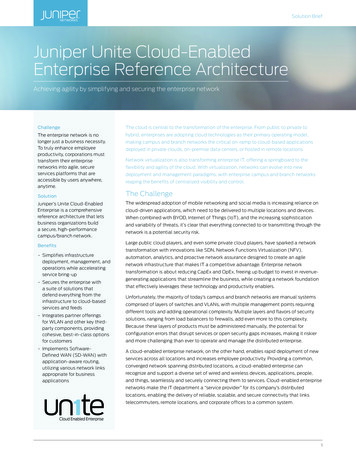

![Welcome [dashdiet.me]](/img/17/30-day-weight-loss-journal.jpg)

